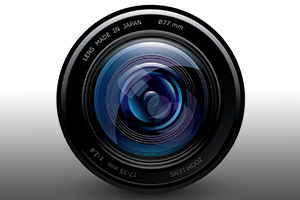Miniature Camera Lens
 Researchers have developed a camera lens that’s so small it can fit over the end of a fiber optic filament – a breakthrough that could have profound implications for medicine as well as other applications. The lens is so small that it can be injected into virtually any part of the human body using a standard hypodermic syringe, giving physicians the ability to perform exploratory procedures without the need for surgery or endoscopy.
Researchers have developed a camera lens that’s so small it can fit over the end of a fiber optic filament – a breakthrough that could have profound implications for medicine as well as other applications. The lens is so small that it can be injected into virtually any part of the human body using a standard hypodermic syringe, giving physicians the ability to perform exploratory procedures without the need for surgery or endoscopy.
Best of all, the lenses can be produced in high quantities, to exacting specifications, quickly and inexpensively on a 3D printer. The new printer uses a technique which focuses lasers onto a liquid polymer to harden the material layer by layer. The small size is made possible by delivering ultra-short pulses (two photons at a time).
In addition to the wide-ranging medical uses, the small lenses (about the size of a period at the end of a sentence) are ideally suited for covert surveillance. The flexibility of the printing method will also open doors for miniaturized optical instrumentation, illumination systems, quantum emitters and detectors and tiny, insect-like drones with autonomous vision capabilities.
For information: Harald Giessen, University of Stuttgart, 4th Physics Institute, Pfaffenwaldring 57, 70550 Stuttgart, Germany; phone: +49-711-685-65111; fax: +49-711-685-65097; email: h.giessen@pi4.uni-stuttgart.de; Web site: http://www.pi4.uni-stuttgart.de/home